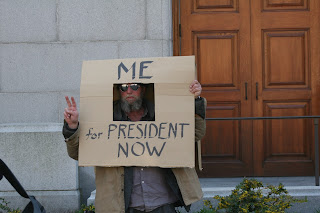The following was the opening of my literature review and also is intended to be my introductory paragraph for my final paper for the Full Sail EMDT ARP. I welcome any and all comments and critiques:
 |
| Photo by Jason Peglow (2010) |
In 2007, the Department of Education and its affiliates released a national report card detailing the results of student writing proficiencies in eighth and twelfth grades. Eighty-eight percent of students at the eighth grade level performed at or above the basic writing proficiency level, thirty-three percent scored at or above proficient, and only two percent achieved advanced in their writing proficiency (National Assessment of Educational Progress, 2007). Between the 2002 assessment and the 2007 assessment, the proficiency score had only increased one percentage point from thirty-two percent at or above proficient to thirty-three percent at or above proficient, and it remained fixed at two percent advanced.
The Department of Education noted that by 2014 every student must achieve academic proficiency (NCLB, 2001). With the demand for one hundred percent proficiency slated for 2014 and with sixty-seven percent of the nation’s students currently scoring below proficient in writing, there has been a pedagogical need to find effective techniques to implement in lessons and curricula to boost writing scores and raise student proficiencies. Lam and Law (2007) identified a direct correlation between low student interest towards the traditional writing process and poor writing performance. Clayton, Blumberg, & Auld (2010) explained that although the lack of student motivation negatively effecting student performance in academics was not entirely a new revelation, it did raise the question as to what factors were needed in the 21st century classroom to raise student interest in writing which would correlate to raising academic writing proficiencies as well.
Works Cited:
Clayton, K., Blumberg, F., & Auld, D. P. (2010). The relationship between motivation, learning strategies and choice of environment whether traditional or including an online component. British Journal of Educational Technology, 41(3), 349-364. Retrieved from http://web.ebscohost.com/ehost/pdfviewer/pdfviewer?hid=113&sid=15efb7c7-4949-44f9-b518-9cc9b47b59fa%40sessionmgr110&vid=42
Lam, S., & Law, Y. (2007). The roles of instructional practices and motivation in writing performance. Journal of Experimental Education, 75(2), 145-164. doi: 10.3200/JEXE.75.2.145-164
National Assessment of Educational Progress. (2007). Writing report card. The Nation’s Report Card. Retrieved from http://nationsreportcard.gov/writing_2007/w0003.asp?tab_id=tab1subtab_id=Tab_1#chart
NCLB. (2001). No child left behind act. Retrieved from http://www2.ed.gov/nclb/landing.jhtml


















